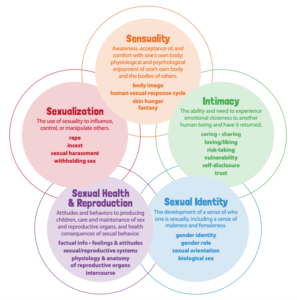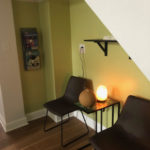
Circles of Sexuality: Sexual Identity
By: Riley Fortier, M.Ed.
Circles of Sexuality
The circles of sexuality were created by Dennis Daily in 1981 to show a more holistic approach to sexuality. Daily created this model for a strengths-based approach to social work for client’s sexual wellbeing. The “circles” or categories of sexuality are: sensuality, intimacy, sexual identity, sexual health and reproduction, and sexualization. The following categories and descriptions have been slightly adapted from Daily’s original 1981 framework.

Source: WholeSomeBodies
This blog is going to focus on the second circle of sexuality, intimacy. To learn more about the other aspects of sexuality, check out my previous blog HERE.
Sexual Identity
Sexual identity is how we perceive ourselves as sexual beings. Some components of sexual identity are:
- Sex
- Gender identity
- Gender roles
- Sexual orientation
I’d like to note that this is the circle of sexuality that is the most outdated since the understanding of sexuality and gender has changed so much in the last 30 years. I have adapted it to reflect more accurate language.
Sex

Source: Sharon McCutcheon via Unsplash
Sex is fluid in its definition, depending on the person. Traditionally, sex has been defined by PIV sex (penis-in-vagina) sex, but that is a very limiting description for many folks. This definition might not work for those who are queer, gay, etc., and/or people who do not have sex that revolves around a phallus, people who do not like penetration, or people who are disabled.
How people like to have sex, or not like to have sex, is a main factor in their sexual identity. Allosexual means experiencing sexual attraction, and asexual means experiencing minimal, inconsistent, or no sexual attraction. Both are part of someone’s sexual identity.
Gender Identity
How you describe your gender! Could be the same as the gender you were assigned at birth; could be different!
Gender Roles
Gender roles include a range of behaviors and attitudes that are generally considered appropriate for a person based on their sex. It’s important to not that race, class, and culture play a huge role in determining which behaviors are considered masculine, feminine, or androgynous.
Sexual Orientation
Sexual orientation is who you’re sexually attracted to! Men, women, both, neither, your gender plus another, all genders, etc.!
More Info
Stay tuned for the next blog in this series titled, “Circles of Sexuality: Sexual Health & Reproduction.”











